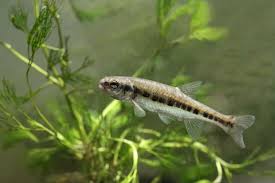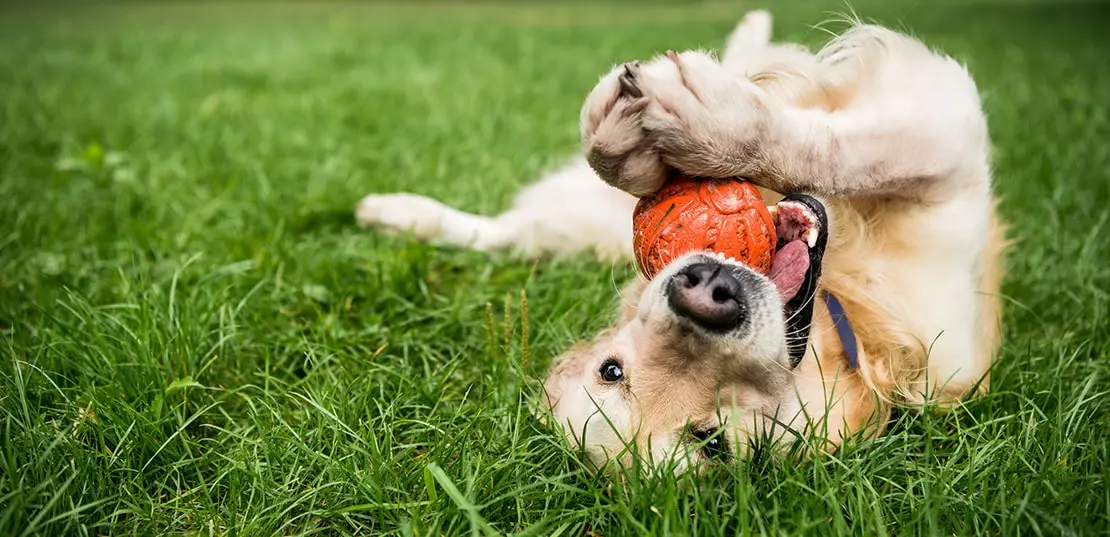
Minnow
Conditions of detention
Minnows are highly adaptable and can thrive in a wide range of aquarium setups. They do well in tanks with a minimum size of 10 gallons, although larger tanks are preferable for groups, especially for species that enjoy schooling. Minnows prefer water temperatures between 64-72°F (18-22°C) and slightly acidic to neutral water with a pH range of 6.0 to 7.5. They thrive in well-planted tanks with plenty of open swimming space. Minnows are peaceful and do well in community tanks, making them suitable for both beginners and experienced aquarists.
Useful Fact: Minnows are schooling fish and should be kept in groups of at least six to encourage natural behavior and reduce stress.
Nutrition and diet
Minnows are omnivorous and require a varied diet to stay healthy. They can be fed high-quality flake or pellet food, supplemented with live or frozen foods such as daphnia, brine shrimp, and bloodworms. Minnows also enjoy vegetable matter, which can be provided through blanched spinach, lettuce, or spirulina-based foods. Providing a balanced diet helps maintain their vibrant colors and overall health.
Useful Fact: Minnows are opportunistic feeders and will readily eat a wide variety of foods, making them easy to care for in terms of diet.
Health
Minnows are generally hardy fish but can be susceptible to common freshwater diseases such as ich, fin rot, and bacterial infections, particularly if water quality is poor. They are also prone to stress-related illnesses if kept in overcrowded conditions or if there are aggressive tankmates. Regular monitoring of water parameters and maintaining a clean environment are essential for preventing disease.
Useful Fact: Minnows are more resistant to fluctuations in water temperature and quality than many other fish, making them an excellent choice for outdoor ponds as well as indoor aquariums.
Grooming and care
Minnows do not require traditional grooming, but their environment needs regular maintenance. Given their small size and active nature, frequent water changes (about 20-30% weekly) and good filtration are necessary to maintain water quality. It’s also important to ensure that the tank is not overcrowded, as this can lead to stress and poor health.
Useful Fact: Minnows are often used as “starter fish” in new tanks due to their hardiness, but they still require a clean, stable environment to thrive.
Education and training
Minnows are not typically trained, but they can learn to recognize their owners and will often come to the front of the tank during feeding times. While they are not as interactive as some other fish species, their schooling behavior and active swimming make them engaging to observe.
Useful Fact: Minnows are most active during the day and can often be seen swimming together in tight schools, creating a lively display in the aquarium.
Toys and entertainment
Minnows enjoy exploring their environment and swimming in schools. Providing them with a well-planted tank that includes open swimming areas, rocks, and driftwood gives them plenty of places to explore. They are active swimmers, so they benefit from having open swimming areas where they can move freely.
Useful Fact: Minnows are particularly active when kept in groups, and their schooling behavior can create a dynamic and visually appealing tank environment.
Safety
Minnows are generally peaceful and do well in community tanks with other non-aggressive fish. They should not be housed with larger, predatory species that might see them as prey. Minnows are also jumpers, so it’s important to keep the tank covered to prevent accidents.
Useful Fact: Minnows are best kept with other small, peaceful fish that share similar water requirements, making them ideal for a community tank setup.
Accessories
Essential accessories for a minnow tank include a reliable filter to maintain water quality, a heater if necessary to keep the temperature stable, and a light source that supports plant growth. Minnows appreciate a tank with plenty of plants, both live and artificial, as well as open areas for swimming. A tight-fitting lid is recommended, as Minnows are known to jump.
Useful Fact: Minnows thrive in well-planted tanks that mimic their natural environment, providing them with security and encouraging natural behaviors.
Socialization
Minnows are social fish and do best in groups. They are generally peaceful and get along well with other community fish of similar size and temperament. Keeping them in schools of at least six helps reduce stress and encourages natural schooling behavior. Minnows are active during the day and often seen swimming together, making them a lively addition to any community tank.
Useful Fact: Minnows are happiest when kept in schools, where they can display their natural behavior and thrive in a social environment.
Travel and Transportation
When transporting Minnows, use a plastic bag filled with water from their tank and ensure it is well-oxygenated. Transport them carefully to avoid temperature fluctuations and stress. Keep the bag in a dark, insulated container to minimize stress.
Useful Fact: Minnows are relatively hardy during transport but should be acclimated slowly to their new environment to reduce stress and prevent shock.
Behavior and psychology
Minnows are known for their active, social nature and peaceful temperament. They are generally peaceful but can become stressed if kept alone or in small numbers. Minnows are most comfortable in groups, where they exhibit natural schooling behavior and active swimming patterns. Their behavior is most natural and engaging when they feel secure in a well-maintained, community-oriented environment.
Useful Fact: Minnows are schooling fish that thrive in groups, displaying their best behavior and colors when kept in a social setting.
Legal aspects
There are generally no legal restrictions on owning Minnows, but it’s important to ensure they are sourced from reputable breeders or suppliers. As with all fish, ethical sourcing helps support sustainable practices and ensures the health of the fish.
Useful Fact: Many Minnow species are bred in captivity, making them a sustainable choice for home aquariums and reducing the impact on wild populations.


